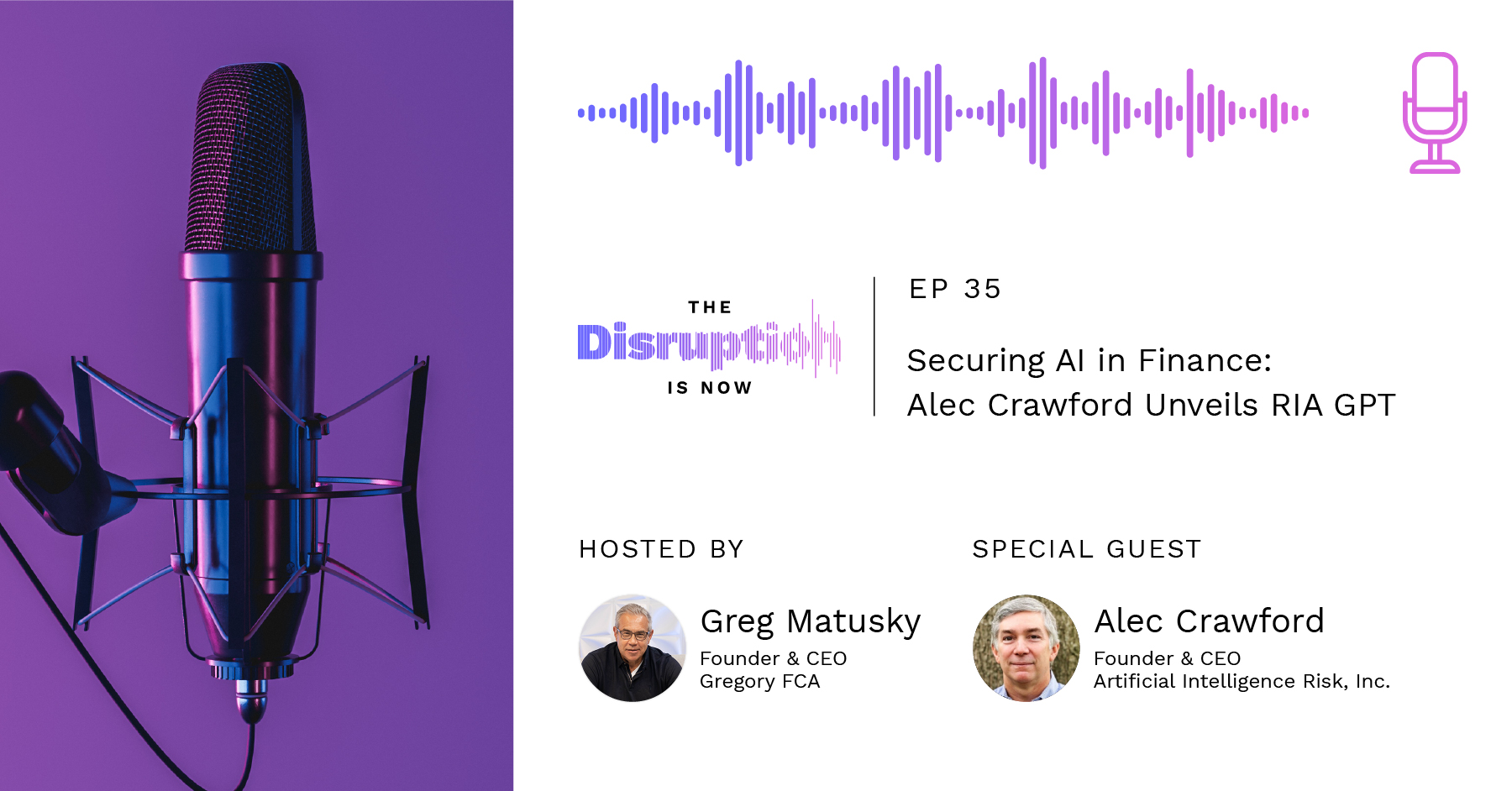The AI revolution is reshaping industries across the board, but few sectors stand to be as profoundly impacted as financial services. While the potential benefits are immense, so too are the risks — particularly for Registered Investment Advisors (RIAs) and wealth managers handling sensitive client data.
Alec Crawford is looking to change that. After 30 years on Wall Street, he started Artificial Intelligence Risk, Inc., to create a compliant and safe way to introduce AI to the highly regulated financial service industry. Crawford joins host Greg Matusky on this episode of The Disruption Is Now to discuss how AI affects advisors and how they can use the technology without putting client data at risk.
Crawford paints a picture of a near future where AI supercharges human advisors — allowing for deeper client relationships and more strategic work. Yet, he also warns of the pitfalls and regulatory hurdles that lie ahead.
Listen in to hear valuable lessons on balancing innovation with compliance, and how AI might reshape professional services.
Watch now:
Key takeaways
AI in financial services today
Financial advisors using public AI tools like ChatGPT face significant risks, including potential breaches of client confidentiality and regulatory violations. Artificial Intelligence Risk, Inc. aims to address these issues by providing secure, private, cloud-based AI solutions with built-in governance, risk management, and compliance features. The focus is on creating safe, compliant ways for these professionals to leverage AI tools like large language models while protecting client data and adhering to regulatory requirements.
Agents are coming
Crawford envisions AI agents that can integrate various siloed tools and APIs used by financial advisors, creating a unified interface where advisors can use conversational AI to perform multiple tasks across different systems. This could dramatically streamline workflows, increase productivity, and give advisors more time to spend with their clients rather than doing drudge work.
The next big thing
Crawford predicts that within 10 years, we may move beyond current large language model technology to something even more advanced. He notes that while OpenAI currently has about a year’s lead on competitors, the field is rapidly evolving and new breakthroughs could change the competitive landscape.
Key moments
- How Crawford started working with AI (1:28)
- What led to the AI boom in November 2022 (5:00)
- Crawford’s reaction to seeing ChatGPT the first time (6:38)
- Exploring the genesis of Crawford’s company (10:35)
- The challenges of using AI in the financial world (13:30)
- Explaining upcoming regulations from the SEC (15:00)
- Crawford’s vision for autonomous agents in financial services (23:20)
- Predicting the future of AI (27:50)
- What would produce the next AI winner (30:15)

